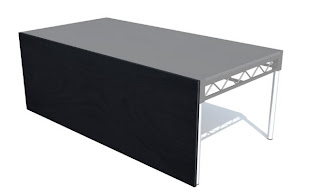Megan Byrne decodes some of the odd terms coming out of the MTC production department.
After every rehearsal and performance of our productions, all MTC staff receive an email report letting us know how everything is going, and if there’s anything particular required of our various departments. If you aren’t aware of some of the many interesting theatre terms (which our production departments are well versed in), these reports might seem like they’re written in another language – or conjure up very amusing mental images. Take this example from the Summer of the Seventeenth Doll technical report earlier in the year:
Can the cougar please be brought on stage first thing in the morning.
Lighting requires the cougar.
You might wonder, quite reasonably, why on earth our stage manager would request that a big carnivorous cat be led on stage. Perhaps this rendition of Summer of the Seventeenth Doll is going to be a little different to what you’ve seen in the past? Perhaps we should put signs in the theatre foyers to keep you on your guard?
It makes much more sense if you know that the cougar is a vertical elevated work platform that we use to get up to heights of around seven metres to focus lights, paint tops of walls etc.
Here’s a couple of other terms you’ll regularly find in show reports, as explained by our production team.
Rostra – You can almost think of these like building blocks. We use them when we need the stage, or part of the stage to be higher. They are commonly of a rectangular shape and often a standard size of 2.4m x 1.2m but this does vary. Rostra can be of different shapes, and we build and re-use these all the time, but often change the legs over to use them at different heights.
Fascia – this is a cover, often used at the front of the stage to make it look neat and tidy. When we use rostra we might make a small fascia to attach on the sides to make them look solid and hide underneath them. Fascia’s don’t have to be wood, they can be painted timber or otherwise.

A rostrum, with fascia attached.
Juliets – also referred to as Juliet Balconies due to the famous balcony scene in Shakespeare’s Romeo and Juliet. In older theatres, these are the decorative boxes in the auditorium to the side of the stage, which are often used as lighting positions, and can be used for entrances/exits, or elevated performance spaces. The MTC Theatre has retractable Juliets, which can be added to a production where necessary.
Gobo – An etched plate that is placed inside the lens tube of a spotlight so that a pattern is cast on stage. Gobos might be used to imitate the effect of light through foliage or to create the effect of a neon sign. It could also be placed in a rotating holder to create a dynamic effect, such as light bouncing off rippling water.
These are just some of the many weird and wonderful sounding words we use to explain what’s happening, or needs to happen on stage. So hopefully, the next time you overhear someone talking about how they have to ‘move the rostra, then bring out the cougar so we can insert the gobo into the spotlight focused onto the Juliets’, you’ll know exactly what they mean.
Have you heard any strange theatre terms and wondered what they mean? Drop a note in the comments box below and we’ll do our best to enlighten you.
Published on 27 April 2012
